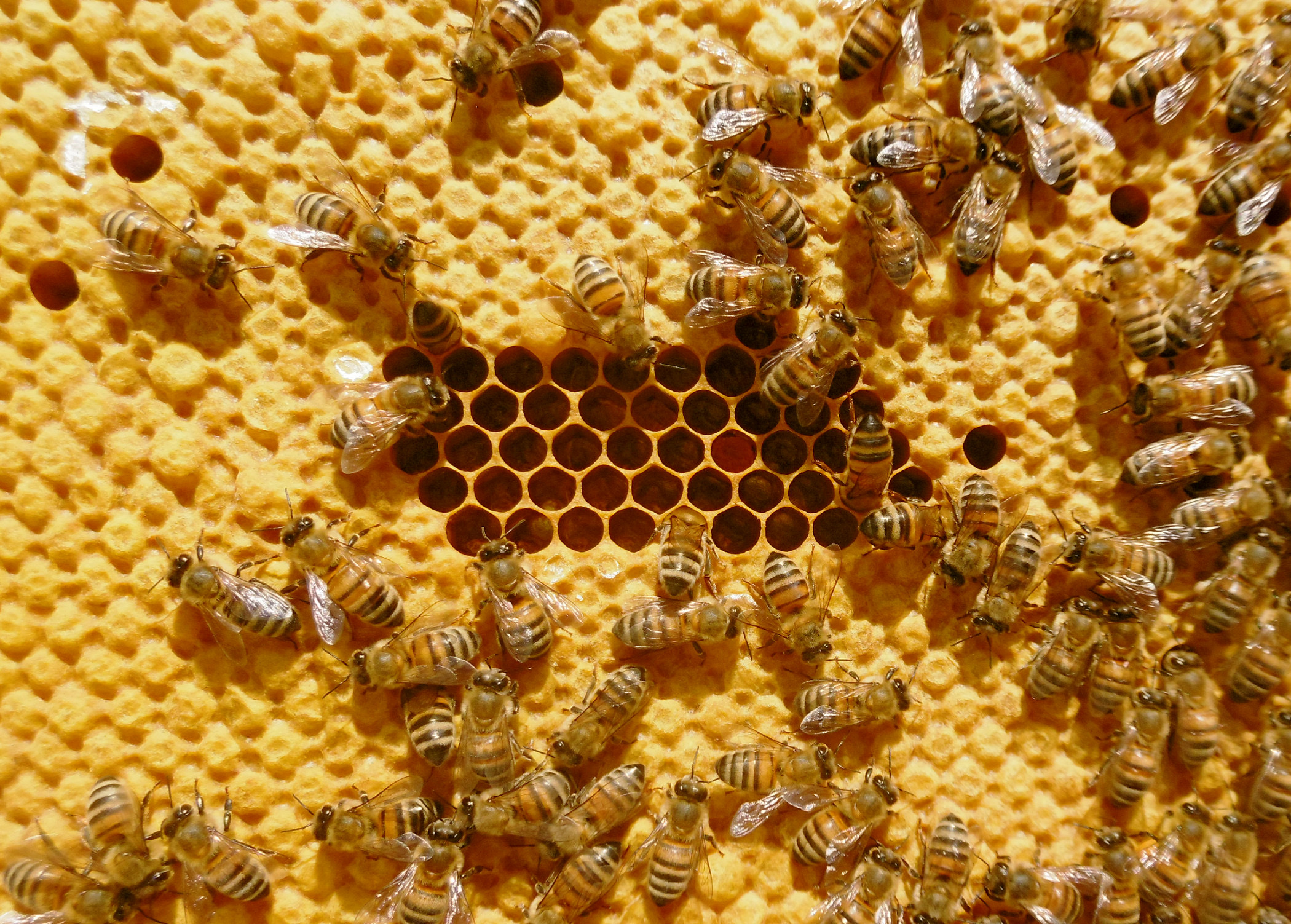Hygienic bees
Small cell bees are hygienic
A research team at the University of Lublin, Poland, has been studying bees on small cells. One of the experiments concerns the clearance of dead capped brood (needle-killed pupae), a trait that is important for resistance to brood diseases such as American foulbrood and chalkbrood.
PDF-file can be downloaded from here:
The study aimed to investigate whether keeping bees on small-cell honeycombs (cell width of 4.93 mm), in combination with natural selection by not treating against Varroa destructor, intensifies the clearance of dead brood. It was also tried to find out whether the actual transfer of bee colonies treated against Varroa (without natural selection) on small cell wax combs resulted in an intensification of hygienic behavior.
The hygienic behavior was thus tested in two groups, one treated against varroa and one not treated, both transferred from large cells (5.56 mm) to small cells.
Two control groups consisted of bees treated against varroasis and untreated colonies, kept on wax combs with standard Polish cell size (cell width 5.56 mm).
Regardless of whether or not they had been treated against varroa, the bee colonies on small cells (4.93 mm) cleared out dead pupae (the needle test) faster than bee colonies kept on the standard (5.56 mm) cell size, both treated and untreated.
The experiment showed that hygienic behavior can be intensified by transferring bee colonies to small cells. No special selection was needed among bee colonies not controlled against varroa to achieve an improvement in the ability to clear out needle-killed brood.
The practical application of this method is likely to be improved by conducting further studies on different bee colonies, as they may differ significantly in the intensity of their hygienic ability (the genetic traits they have been endowed with). They may also differ in their ability to build small cells correctly.
Source: Olszewski K., Borsuk G., Paleolog J., Strachecka A., Bajda M., Hygienic behaviour of colonies kept on small-cell combs, Med- yycyna Weterynaryjna (Veterinary Medicine – Science & Practice) vol. 70 (12), 774-776, 2014.
Varroaresistant bees are hygienic
There are different types of hygienic traits that varroa resistant bees can use. However, it is not necessary to select for hygienic traits when breeding bees to become more varroa resistant. It is sufficient and easier to select for small numbers of mites.

It has been shown that bees resistant to varroa by some hygienic behavior also more quickly clear out dead brood, also needle-killed or freeze-killed. This killing and measurement is used to select for hygienic behavor (HB). Such HB is good for controlling brood diseases, e.g. foulbrood and chalkbrood. However, such selection does not increase the trait(s) for varroa resistance as good as selection on low amount of natural downfall of mites or low infestation rate of varroa mites (e.g. shaker jar + technical alcohol). (See the abstract of Dr. Melissa Oddie's talk at the link above.)
Already after a few years when I had bred for varroa resistance in my Elgon stock, an elgon colony was tested by a researcher with 100 needle-killed brood cells. The clearance was not far from 100% in 12 hours. No selection had occurred using this method.
Apparently the bees had increased this hygienic behavior through selection for low varroa level.
A couple of years ago, a colony was tested again, at a different location. 98% of 50 cells were cleared in 6 hours. Probably though the most important HB trait for varroa resistance is recapping.
See the link: